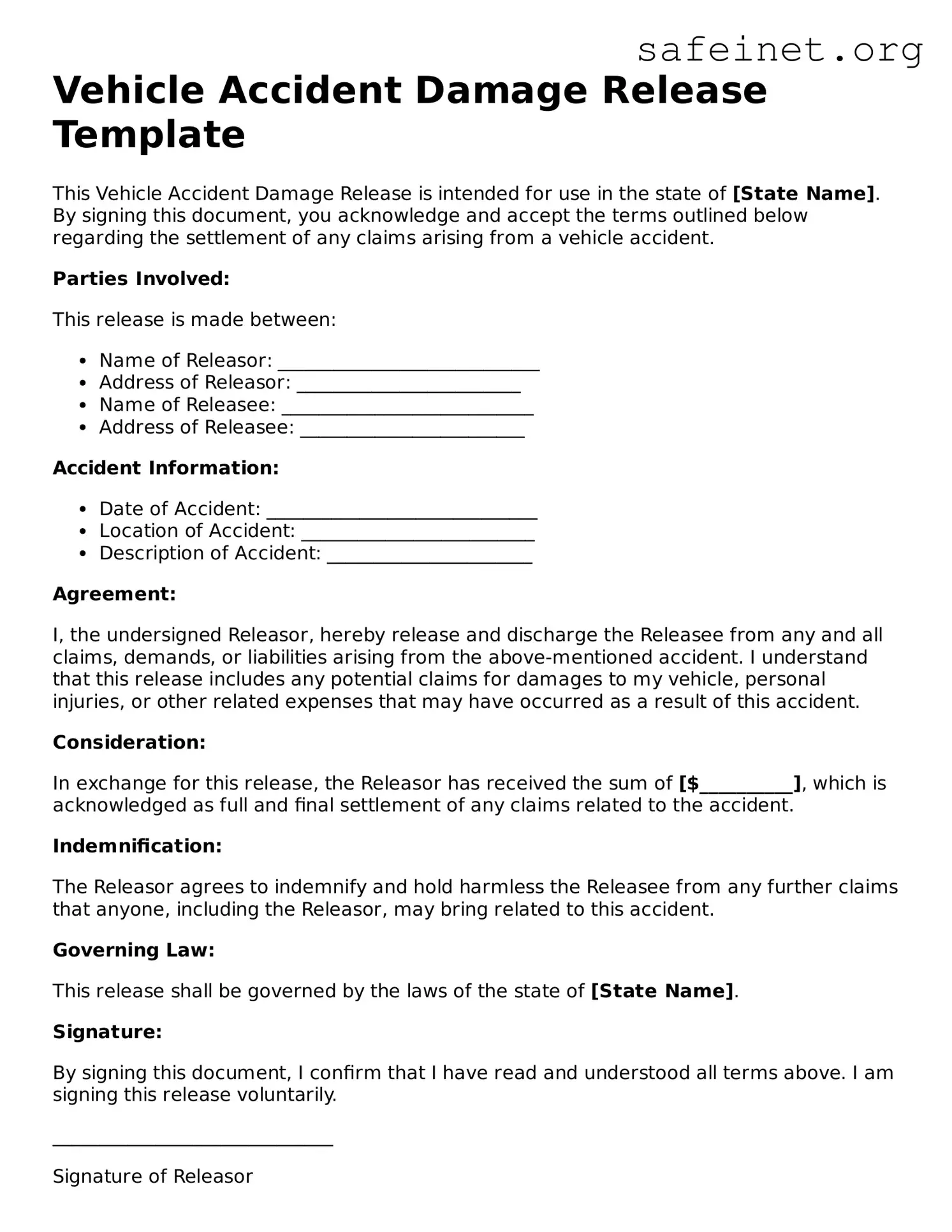What is a Vehicle Accident Damage Release form?
A Vehicle Accident Damage Release form is a document used to release liability for potential damages after a vehicle accident. It essentially allows involved parties to agree on how to handle the damages and prevents future claims related to the incident.
Why should I fill out a Vehicle Accident Damage Release form?
Filling out this form offers protection to both parties involved in the accident. It documents the agreement regarding damages and ensures that no further claims can be made after the release is signed, which helps provide closure for both sides.
When should I use this form?
You should use the form when you have been involved in a vehicle accident and both parties agree on how to handle damages. It's important to have a clear and documented understanding before making any arrangements for repairs or payments.
What information do I need to provide?
The form typically requires basic information such as names, contact details, vehicle information, and details about the accident. It may also ask for information about any damages agreed upon and how both parties will address them.
Are there any risks in signing this form?
Yes, there are some risks. By signing the form, you may be giving up your right to make claims in the future related to the accident. It's crucial to ensure that all damages and agreements are fully understood before signing.
Can I use this form if I'm not at fault?
Yes, even if you are not at fault, you can use this form if you reach an agreement with the other party on how to handle damages. However, consult your insurance company first to understand the implications.
Is this form legally binding?
Once signed by both parties, the form becomes a legally binding agreement. It documents the understanding reached, and courts typically uphold such agreements as long as they meet certain legal standards.
Do I need a witness to sign this form?
While it’s not always required, having a witness can add an extra layer of validation. A witness can help confirm that both parties fully understood and agreed to the terms in the form.
What should I do with the completed form?
Once completed and signed, keep a copy for your records. It’s wise to share copies with the other party involved and, if applicable, your insurance company. This ensures everyone has access to the agreement and can refer to it if needed.
